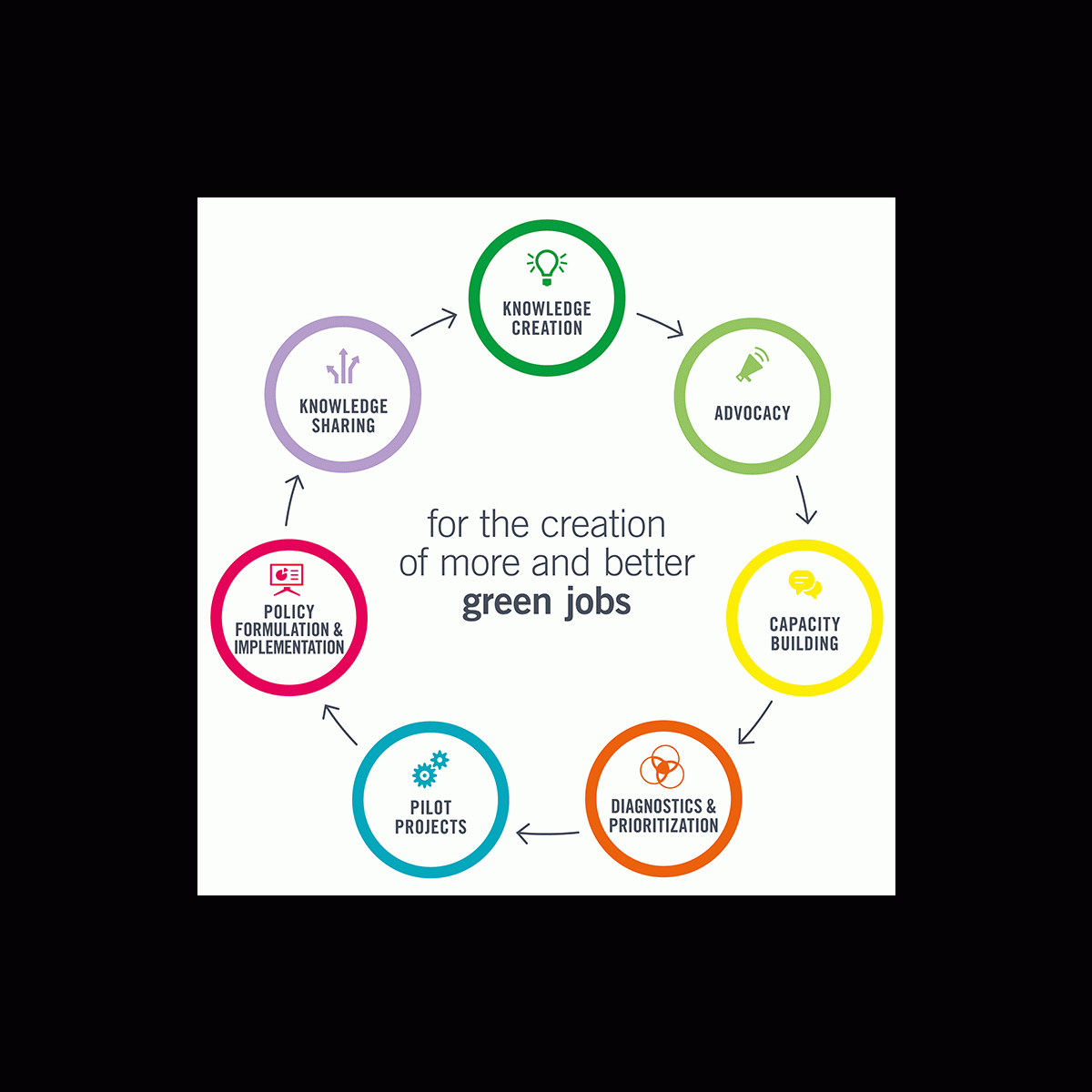Training Guidebook
The GAIN Training Guidebook includes 4 modules on policy, statistics, Input Output and Social Accounting Matrix, which are planning tools well suited to analysing the impacts on jobs and income distribution, based on national accounts and data collected at the country level. They are transparent, accessible and relatively easy to build.
Introduction to Green Economy and Labour Market Assessments

This module is intended for policy-makers and for other decision-makers involved in the planning, formulation and implementation of policy. The users are not expected to be technical experts in modelling and not necessarily those who undertake the assessment work. Rather, they are those likely to commission or mandate assessments and to receive the results of assessments.
The objective is to:
- understand the rationale, in terms of employment, for a transition to greener economies.
- learn the nature and scale of the major structural transformation, macro-economic and labour market implications of the greening of economies.
- understand the importance of quantitative assessment prior to, in the process of, and following the formulation and implementation of policies for a transition to a green economy.
- become familiar with assessment tools and methods that are useful for purposes of policy and planning for a transition to a green economy, what each method can and cannot do, and how to interpret the results of assessments.
Assessment Tools: Inventories and Surveys as Sources of Data on Employment in the Environmental Sector and Green Jobs

The second module of the training guidebook targets statisticians and analysts seeking to estimate total direct employment in the environmental sector, and in each of its green sub-industries, and green jobs. It describes how data from inventories and surveys can be used for this purpose.
Building Input-Output Based Employment projection Models with Expanded Green Industries (Green EPMs)

IO analysis is used to estimate the effects on employment of the increase in final demand for the product or service in a given industry by estimating direct, indirect and induced jobs. Thus, the model can answer questions such as, “How many jobs may result from a given programme of investment in sustainable economic areas?”
This module is meant for analysts who seek to build employment projection models using input-output tables (IOT) and expand them to distinguish green industries and project green jobs. The user will learn how to build a static short-term IO model that projects output and employment from policy scenarios, which are modelled as changes in final demand or investment.
From IO and Supply-and-Use to Social Accounting Matrix Analysis

This module is intended for analysts seeking to explore foundations and extensions of IO analysis through supply-and-use-tables (SUTs) and social accounting matrices (SAMs), which allow the study of income distribution, inequality and induced effects (the employment and output effects of household spending).